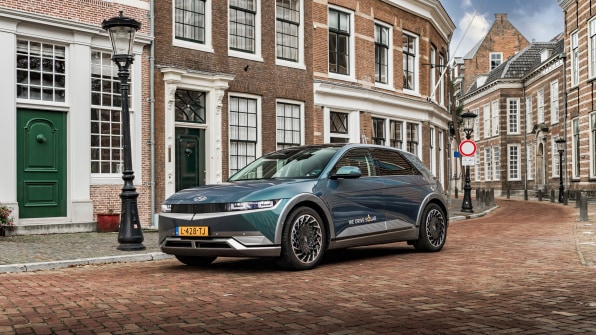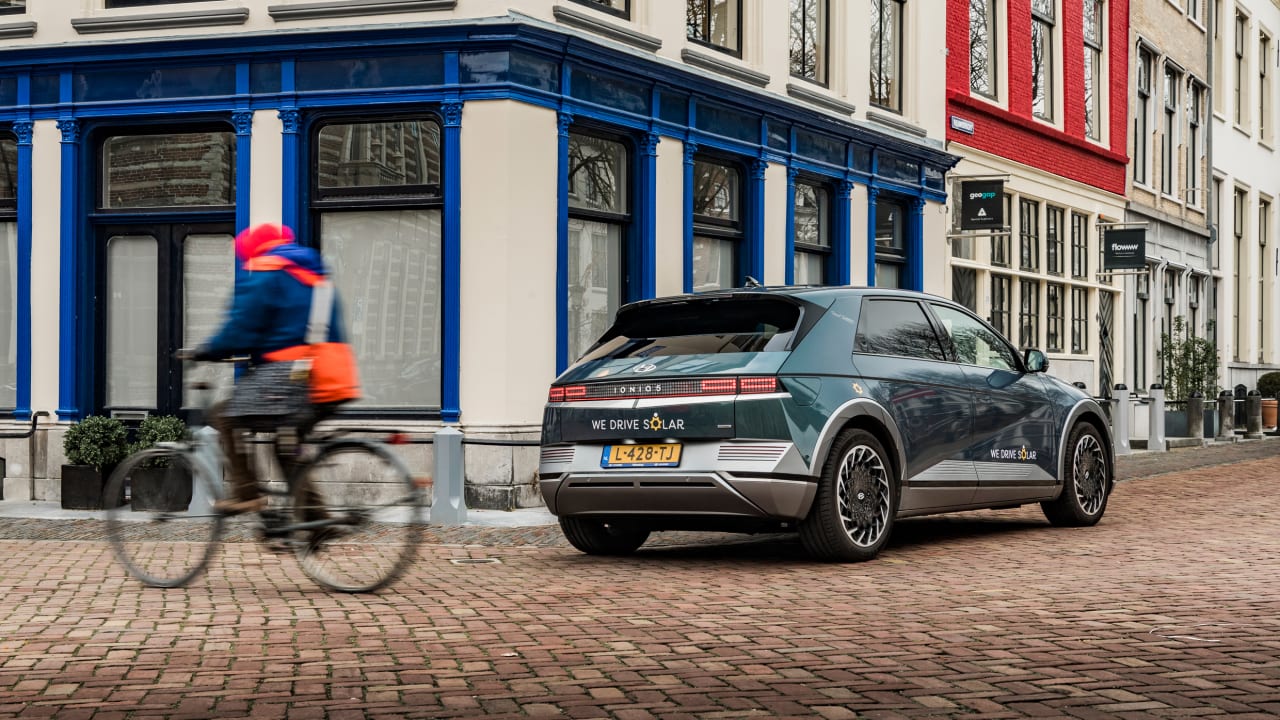There are now more than 2,000 solar panels on a spacious sliding roof over a parking lot next to an office building in Utrecht, the Netherlands. Among them are 250 “bidirectional” chargers for electric cars, so that cars parked in the parking lot can help to store the solar power for the grid in the future.
Aiming to be the first fully bi-directional city in the world, the city is using electric car batteries to solve one of the challenges of renewable energy: solar and wind power are not always available, and large batteries to build for storage are still expensive. As more and more people switch to electric vehicles, the cars can serve as network infrastructure.
[Image: University of Twente]“We are essentially seeing two megatrends: We are now seeing tremendous growth in renewable energy production and, at the same time, a tremendous increase in the number of electric cars coming onto the market and being introduced,” says Robin Berg, the director of We Drive Solar, the organization that runs one builds and manages a new network of bidirectional chargers. “So that the energy transition goes well and can be effective without large investments by network operators and other storage facilities, it is really the right way to combine these two trends. And so the batteries and cars are basically a buffer for renewable energies to balance the system. “
In the parking lot owned by the insurance company asr, the solar panels will send electricity to both the office building and the cars when the sun is shining. When it is dark, the cars’ batteries reverse and send energy to the building so that the office can continue to run on solar energy while the energy demand is controlled by software. (The insurance company helped finance the installation, and partners such as the nearby University of Twente are helping to test the performance of the system.) The approach relieves the burden on the wider power grid. “We really see this as a network-based overall solution where you have cars at different locations that offer local flexibility, but also flexibility for the entire network,” he says. “Overall, you get a very smart system.”
Hundreds of additional bi-directional chargers have been installed in other parts of the city and thousands more are being added. But there are still major hurdles to overcome: Current electric cars are not yet able to send power back into the grid or into a building on command, so the system can only work after a technical update. But the organization is working with several automakers who will be adopting the technology soon. Hyundai’s Ioniq 5, which supports bi-directional charging, will hit the market in 2022, and a public car sharing fleet of 150 cars will be added in Utrecht.
 [Photo: courtesy We Drive Solar]Once the cars are in place, We Drive Solar will keep track of how using the system affects the cars’ batteries, but it is likely that it will help the cars, not harm them. “We’re not going to discharge the whole battery,” he says. “We’re just going to take some power out and put some power back in, and this up and down process isn’t a whole cycle. Above all, it is the entire cycle that causes the battery to degrade earlier. “
[Photo: courtesy We Drive Solar]Once the cars are in place, We Drive Solar will keep track of how using the system affects the cars’ batteries, but it is likely that it will help the cars, not harm them. “We’re not going to discharge the whole battery,” he says. “We’re just going to take some power out and put some power back in, and this up and down process isn’t a whole cycle. Above all, it is the entire cycle that causes the battery to degrade earlier. “
The University of Utrecht has calculated that 10,000 electric cars with bidirectional charging can cover the city’s entire electricity needs. That’s less than 10% of the city’s current fleet of vehicles; Electric vehicles are growing rapidly and the Netherlands are planning to ban sales of new gasoline and diesel cars from 2030.

